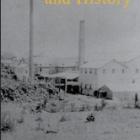Brown, Karen. “Poisonous Plants, Pastoral Knowledge and Perceptions of Environmental Change in South Africa, c. 1880–1940.” Environment and History 13, no. 3 (Aug, 2007): 307–32. doi:10.3197/096734007X228291. By the 1920s more livestock in South Africa died from plant poisonings (toxicoses) than from contagious and infectious diseases. This was important because livestock made such a significant contribution to the South African economy. By the mid-nineteenth century the Cape Colony had emerged as one of the world’s largest exporters of animal fibres, whilst the country as a whole sought to increase milk and beef production during the twentieth century in response to growing industrialisation and urbanisation. African and settler farmers were already familiar with many varieties of noxious flora and local knowledge made an important contribution to veterinary studies, which began around 1890, into plant poisonings and their role in the changing nature of the veld. Long held assumptions that the grasslands were being degrading through overstocking received additional veterinary input as toxicologists added the rapid propagation of poisonous flora to the list of indicators of veld deterioration. This brought researchers into ecological debates about the transformation of the grasslands and challenged the state, scientists and stockowners to find new ways of managing pastoral farms. The paper discusses the expansion of toxicological and ecological knowledge about the grasslands of South Africa and explores some of the measures put forward to encourage more sustainable animal husbandry. All rights reserved. © 2007 The White Horse Press
"Poisonous Plants, Pastoral Knowledge and Perceptions of Environmental Change in South Africa, c. 1880–1940"
Brown, Karen | from Multimedia Library Collection:
Environment and History (journal)


